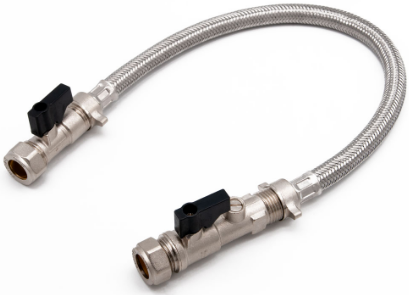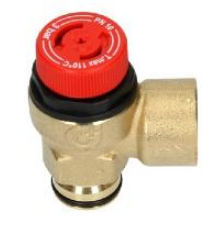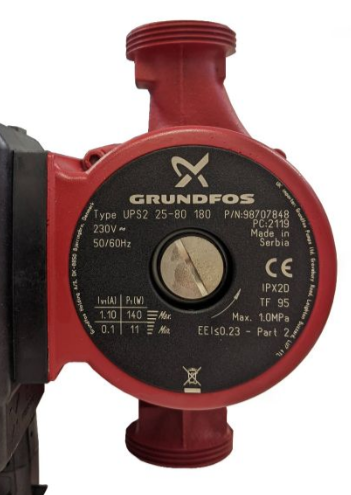A Worcester boiler leaking water from underneath is worrying because it’s not an exposed pipe or joint leak that can be checked by you. Worcester boilers are known to engineers as being leaky.
Boiler leaking water underneath
If you notice your Worcester boiler leaking water underneath, it’s crucial to address the issue promptly. This could indicate a potential problem with the boiler’s internal components, such as a faulty pressure valve, damaged pipes, or a worn-out pump seal. Other signs include dampness around the boiler, reduced heating efficiency, and strange noises.
A Worcester boiler leaking water underneath could be a sign that components have failed or pipes corroded inside your boiler. Sometimes it may just be a loose nut on one of the components. The main components are likely to be a leaking pressure relief valve or a faulty pump.
Any boiler leaking from the bottom should be considered an emergency, not least because water dripping onto the electrical circuit board in the boiler can short it out, causing high repair costs.
Which Worcester Boiler is Best? FInd out here
In most cases, a qualified engineer will need to open up the boiler casing and check inside. But there are some things you can check when you notice water dripping underneath your Worcester and can take action to stop water damage.

Leak Risks
A leaking boiler can corrode metal components like pipes faster, cause mould growth, and lead to extensive water damage if left unresolved. There is also a risk of electrical damage if water drips onto the circuitry, which could require pricey repairs.
How to quick fix a leaking boiler?
You can use Sentinel leak sealer or this Fernox brand leak sealer which are both highly rated. They can be used to stop minor leaks anywhere on the heating system including radiators.
By trying this fix first, you might get lucky and manage to stop the pinhole or small leak in the system. It is an inexpensive way to see if it does the trick before you are forced to spend hundreds on broken parts in the boiler. Worcester boilers are notorious for having expensive parts.
If you’re tired of sinking cash into your old Worcester boiler, a new boiler replacement is an option. Warmzilla is an online boiler installation company that is able to offer installation prices lower than most. You can get a fixed price online in minutes.
Click here to view why we recommend this company for a new boiler.
Causes of Boiler Leaking from Underneath
Leaking pipework or joint connected to the boiler
Here the pipework is not soldered or installed properly. Maybe one of the fibre washers isn’t seated right. This is a common cause of a leaking boiler from underneath, especially on older boilers. It is easy to check and fix yourself in most cases too.
To check, look at each of the pipes and joints that connect to the bottom of the boiler. You will notice water marks or small drips running down a pipe joint and dripping off. If it is a connection on a fairly new boiler installation, it may just need the nut tightening up.
If you have tightened up the compression nut and it still leaks, it is likely to be a worn fibre washer that needs to be replaced. This is usually the case on old boilers. In this case, you will need to drain the heating system of water and replace the washer. If you are not confident in doing this yourself, call a repairman.
How Do I Top Up The Pressure On My Worcester Boiler?
Boiler Leaking When It Rains
If the flue pipe isn’t fitted properly on the outside or sealed properly inside where it connects to the boiler, you will notice leaking water from the bottom of the boiler. Or you may hear dripping sounds coming from inside the unit when it rains.

Sometimes the termination outside hasn’t sealed properly to prevent weather from entering. This is also dangerous because it could allow combustion products entry into the property. Or a weather collar that isn’t fitted or has perished could let water into the flue. It is more likely with Worcester boilers as they allow parts of the flue that are white to be shown outside on the wall.
If you notice gaps or cracks on the outside where the pipe connects to the wall, call an engineer to repair it. Be careful not to pull the pipe back and forth as it could disconnect from the boiler unit inside. The pipe may not be secure enough to prevent it from detaching.
Worcester Boiler Hot Water Takes Too Long: Understanding the Causes and Solutions
Boiler Filling Loop Leaking

The filling loop helps repressurise a sealed heating system by introducing mains water into it.
A filling loop can spring leaks either from the isolation valve, nut connection or the flexible hose that gets damaged. A leak here is easily spotted being directly underneath the boiler.
The issue you have is once they start leaking, they tend to continue even with the valves closed. Over time you will lose pressure in the system and will have to use the filling loop to refill. It’s best to get this replaced at the first sign of a leak.
Leaking Pressure Relief Valve (PRV)

A common cause of leaking boilers is the PRV that isn’t closing properly due to dirt and residue on it. The PRV removes water if there is a high pressure build up in the system. But it can open up because of debris stuck inside and there appear tiny gaps that allow water to seep through. Or the rubber washer can become worn and let water leak.
Although you are most likely to see the effects of a faulty PRV on the copper pipe outside of the house, it can also leak water inside the boiler and drip underneath. Call an engineer to open up the boiler and see if the PRV can simply be cleaned and refitted or needs to be replaced.
Internal Joints and Hoses Leaking
A common issue with Worcester boilers are leaks coming from joints and rubber hoses inside the casing. Whether through wear and tear or a boiler service engineer that hasn’t fitted everything back in place properly, loosened joints or cracked hoses will leak underneath.
Viessmann Boiler vs Worcester Which is best?
Cracked Heat Exchanger
Limescale buildup in any part of the system can be a nuisance, but in the heat exchanger, it can be expensive too. The hotspots created by limescale can eventually lead to cracks on a heat exchanger. This can cause the component to leak. If this is the case, you’ll notice the boiler leaking from the bottom of the casing.
Not a very common occurrence with Worcester boilers, a cracked heat exchanger can be an expensive part to replace. So much that you may decide to invest the money in a boiler replacement. If the boiler is in warranty, contact the manufacturer. If out of warranty, have a serious look at new boilers.
More often, the gasket seal on top of the heat exchanger tends to degrade. This can lead to leaks being more likely. A good engineer will investigate thoroughly if the issue is indeed a corroded heat exchanger or any of the other things that cause the boiler to leak.
Corroded Pipes
In addition to the leaking pressure relief valve or faulty pump mentioned, your Worcester boiler may be leaking due to corroded copper pipes that have eroded over time. Other potential causes include loose nuts or washers on pipe fittings, a degraded heat exchanger accumulating limescale damage, or a degraded diaphragm in the expansion vessel.
If you’re looking for peace of mind that one call can take care of the home essentials, Hometree has great service at an affordable price.
Hometree offers customers peace of mind with home care packages for their boiler, central heating, plumbing, drains, and home electrics all at an affordable monthly or annual cost. Hometree’s aim is to take the stress out of boiler servicing and home maintenance with unlimited call-outs and a 24/7 helpline, as well as a no price-hike promise.
Click here to view why we recommend this company for boiler repair.
Expansion vessel diaphragm has degraded

Expansion vessels usually come inside the boiler although some can be external. If the vessel body or diaphragm inside has degraded, it will let water leak out that will run down to the bottom of the boiler.
Water can collect inside the casing until it overflows out the bottom of the boiler. The danger is if water finds its way into the printed circuit board (PCB) and short circuits the electrics. In that case, you are looking at an expensive replacement. This is why it is so important to get any leaking boiler problems fixed as soon as its noticed.
Central heating pump leaks

Heating pumps force water around the system to provide the required temperature at the radiators. Because so much water goes through them, they are common places for leaks.
If the pump hasn’t been securely fitted and has come loose, it can cause gaskets and seals to deteriorate and leak water through. The seals can wear down and perish anyway, so you will notice more leaks with the boiler over time.
Also, pumps have magnets in them and if the system water hasn’t been treated with inhibitor, the magnetite particles get attracted to the magnet causing buildup here. This can eventually lead to water seeping through.
Worcester boiler leaking right hand side
The three components on the right-hand side of a Worcester boiler that are most prone to leaking are:
Condensate Pipe Connection: The condensate pipe connection is a common area where leaks can occur in condensing boilers. If the connection becomes loose, damaged, or blocked, it can lead to water leaking from this point.
Pressure Relief Valve: The pressure relief valve is designed to release water if the pressure becomes too high. Sometimes, these valves can develop leaks when they get old or faulty.
Flue Connection Seals/Gaskets: While the flue connection itself is less likely to leak, the seals or gaskets around the flue pipe and where it connects to the boiler can be potential points of leakage if they become worn or damaged.
First Steps When Discovering a Leak
If you notice your Worcester boiler is leaking water, the first step is to turn off the main water supply to your home. This is usually located on the ground floor in a cupboard. Next, place a bucket or pan under the leak to catch dripping water and reduce damage. Then call a Gas Safe registered engineer to inspect the boiler as soon as possible.
Identifying the Leak Source
Check areas above where you see water dripping, as the source may be higher up inside the boiler. The leak could start in one area and run down pipes to emerge somewhere below. Keep investigating higher up and look for water marks or drips on pipes to trace the source.
Tightening Fittings Before Calling Engineer
Before calling an engineer, check if you can spot any visible loose pipe connections or fittings that the water is leaking from. Try tightening any compression nuts or fittings with an adjustable wrench to see if this stops the leak. However, do not attempt to detach or remove any boiler components yourself.
Using Error Codes to Diagnose:
Modern Worcester boilers have an electronic display that provides error codes. Check for any error codes showing on the display screen as these can provide insight into what component could be malfunctioning and causing the leak. Refer to your boiler’s manual or the Worcester website for details on your specific error codes.
Preventing Leaks Through Maintenance:
Many leaks can be avoided by having your Worcester boiler serviced annually by a Gas Safe registered engineer. They will check all components and pipe connections and make repairs or replacements to prevent future leaks. Maintaining your boiler properly will extend its lifespan and prevent costly breakdowns.
Avoid Expensive Boiler Breakdown Costs
We recommend Hometree to help with all your boiler breakdown needs. Click here to view why we recommend this company for a new boiler.
Considering Full Replacement
If your boiler is over 10 years old and requires extensive leak repairs, it may be more cost-effective to replace the entire boiler unit rather than sink money into fixing an aging system prone to issues. Get quotes on a new A-rated energy efficient boiler so you can determine the better investment.
Summary
The main causes of a boiler leaking water underneath are:
- Leaking pipework or joints directly connected to the boiler.
- Leaking boiler from the flue connection when it rains.
- Filling loop leaking.
- The pressure relief valve has failed.
- Cracked heat exchanger.
- The expansion vessel diaphragm has degraded.
- Heating pump leaks.
Related Articles:
- Worcester Boiler Pressure Too High: What Should It Be?
- Why Does My Worcester Boiler Keep Losing Pressure? Easy Guide
- Worcester Boiler Keeps Turning Off: Causes And Solutions
*The information in this article should be used for general guidance only and not as financial or health advice. Full details are on the link in the footer to our disclaimer page. Always discuss your requirements with a competent and suitably qualified professional before undertaking any work.

